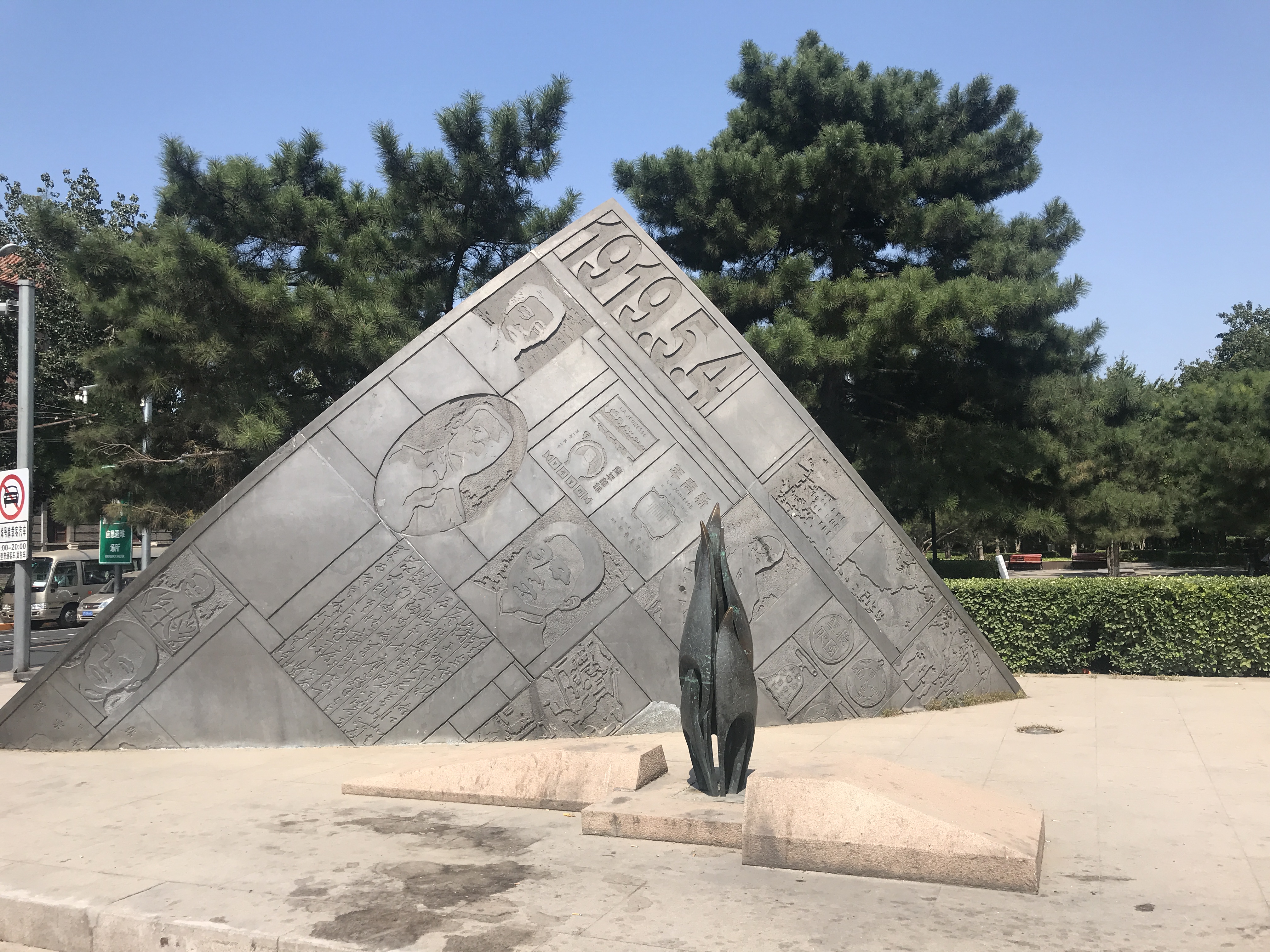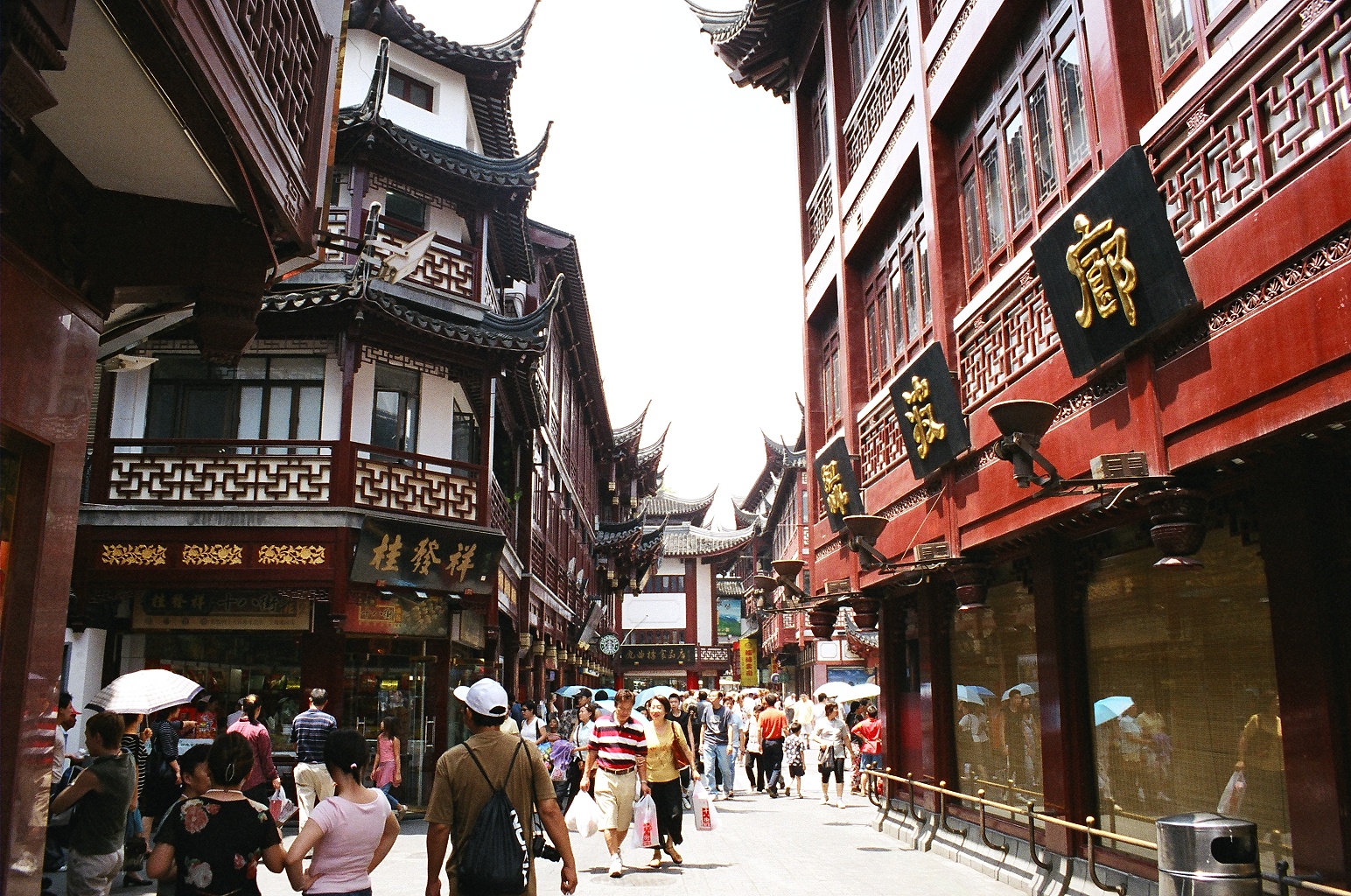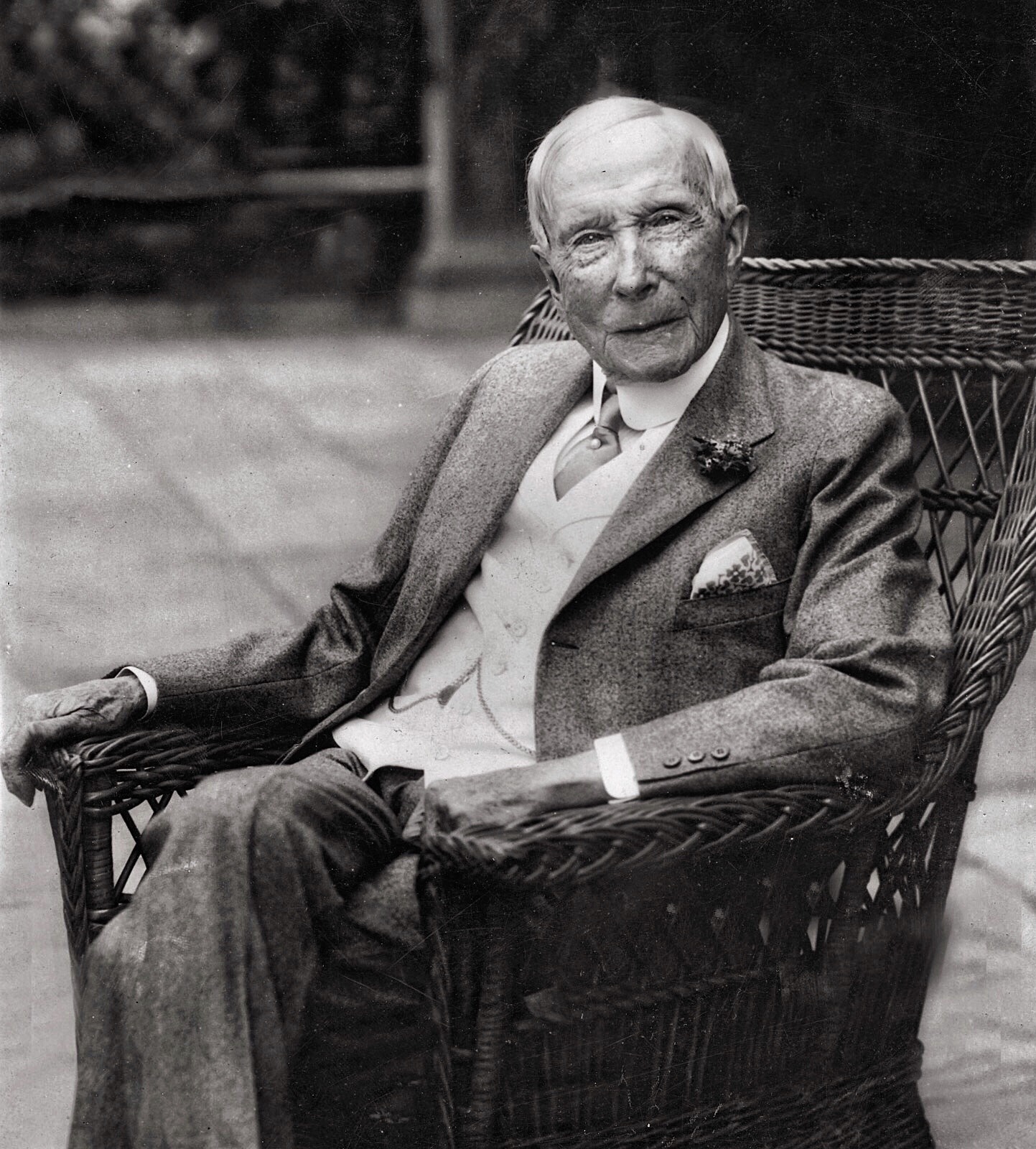|
Four Olds
The Four Olds () refer to categories used by the Red Guards during the Cultural Revolution to characterize elements of Chinese culture prior to the Chinese Communist Revolution that they were attempting to destroy. The Four Olds were 'old ideas', 'old culture', 'old customs', and 'old habits'. During the Red August of 1966, shortly after the onset of the Cultural Revolution, the Red Guards' campaign to destroy the Four Olds began amid the massacres being carried out in Beijing. Terminology The term "Four Olds" first appeared on 1 June 1966, in Chen Boda's ''People's Daily'' editorial, "Sweep Away All Cow Demons and Snake Spirits", where the Old Things were described as anti-proletarian, "fostered by the exploiting classes, [and to] have poisoned the minds of the people for thousands of years". However, which customs, cultures, habits, and ideas specifically constituted the "Four Olds" were never clearly defined. On 8 August, the Central Committee of the Chinese Communist Party ... [...More Info...] [...Related Items...] OR: [Wikipedia] [Google] [Baidu] |
May Fourth Movement
The May Fourth Movement was a Chinese cultural and anti-imperialist political movement which grew out of student protests in Beijing on May 4, 1919. Students gathered in front of Tiananmen to protest the Chinese government's weak response to the Treaty of Versailles decision to allow the Empire of Japan to retain territories in Shandong that had been surrendered by the German Empire after the Siege of Tsingtao in 1914. The demonstrations sparked nationwide protests and spurred an upsurge in Chinese nationalism, a shift towards political mobilization, away from cultural activities, and a move towards a populist base, away from traditional intellectual and political elites. The May Fourth demonstrations marked a turning point in a broader anti-traditional New Culture Movement (1915–1921) that sought to replace traditional Confucian values and was itself a continuation of late Qing reforms. Even after 1919, these educated "new youths" still defined their role with a tradi ... [...More Info...] [...Related Items...] OR: [Wikipedia] [Google] [Baidu] |
Shanghai
Shanghai, Shanghainese: , Standard Chinese pronunciation: is a direct-administered municipality and the most populous urban area in China. The city is located on the Chinese shoreline on the southern estuary of the Yangtze River, with the Huangpu River flowing through it. The population of the city proper is the List of largest cities, second largest in the world after Chongqing, with around 24.87 million inhabitants in 2023, while the urban area is the List of cities in China by population, most populous in China, with 29.87 million residents. As of 2022, the Greater Shanghai metropolitan area was estimated to produce a gross metropolitan product (GDP (nominal), nominal) of nearly 13 trillion Renminbi, RMB ($1.9 trillion). Shanghai is one of the world's major centers for finance, #Economy, business and economics, research, science and technology, manufacturing, transportation, List of tourist attractions in Shanghai, tourism, and Culture of Shanghai, culture. The Port of Sh ... [...More Info...] [...Related Items...] OR: [Wikipedia] [Google] [Baidu] |
Huangpu District, Shanghai
Huangpu District () makes up the eastern part of Shanghai's traditional urban core and is today the most central of Shanghai's 16 districts. Huangpu district is the seat of municipal government, includes key attractions such as The Bund (Shanghai), The Bund and the Old City God Temple of Shanghai, City God Temple, as well as popular shopping districts such as Nanjing Road (Shanghai), Nanjing Road, Huaihai Road, and Xintiandi. The Huangpu District is one of the most densely populated urban districts in the world. Location The Huangpu District is located in central Shanghai, People's Republic of China on the left bank (i.e., west or north bank) of Huangpu River, after which the district is named. It is opposite to Pudong and is bounded by Suzhou Creek to the north. Today's Huangpu District is sometimes referred to as "new Huangpu" to distinguish it from the pre-merger Huangpu District which existed before 2000. In 2000, the pre-merger Huangpu and Nanshi District, Shanghai, Nanshi ... [...More Info...] [...Related Items...] OR: [Wikipedia] [Google] [Baidu] |
Rockefeller Foundation
The Rockefeller Foundation is an American private foundation and philanthropic medical research and arts funding organization based at 420 Fifth Avenue, New York City. The foundation was created by Standard Oil magnate John D. Rockefeller ("Senior") and son " Junior", and their primary business advisor, Frederick Taylor Gates, on May 14, 1913, when its charter was granted by New York. It is the second-oldest major philanthropic institution in America (after the Carnegie Corporation) and ranks as the 30th largest foundation globally by endowment, with assets of over $6.3 billion in 2022. The Rockefeller Foundation is legally independent from other Rockefeller entities, including the Rockefeller University and Rockefeller Center, and operates under the oversight of its own independent board of trustees, with its own resources and distinct mission. Since its inception, the foundation has donated billions of dollars to various causes, becoming the largest philanthropic enter ... [...More Info...] [...Related Items...] OR: [Wikipedia] [Google] [Baidu] |
Peking Union Medical College Hospital
Peking Union Medical College Hospital (PUMCH), also known as Beijing Xiehe Hospital (), is a large teaching hospital in Beijing, China. It was founded in 1921 by the Rockefeller Foundation and is affiliated to both Peking Union Medical College (PUMC) and the Chinese Academy of Medical Sciences (CAMS). During the Cultural Revolution, it was renamed as the "Anti-Imperialist Hospital". It has two locations: the Dongdan Campus in Wangfujing, Dongcheng District and the Xidan Campus in , Xicheng District. On September 10, 2002, Peking Union Medical College Hospital merged with Post and Telecommunications General Hospital of the Ministry of Information Industry to become Peking Union Medical College Hospital of the Chinese Academy of Medical Sciences. Others Sun Yat-sen, the founder of the Kuomintang and the Republic of China, died at the Peking Union Medical College Hospital on March 12, 1925. The last emperor of the Qing dynasty The Qing dynasty ( ), officially the ... [...More Info...] [...Related Items...] OR: [Wikipedia] [Google] [Baidu] |
Soviet Union
The Union of Soviet Socialist Republics. (USSR), commonly known as the Soviet Union, was a List of former transcontinental countries#Since 1700, transcontinental country that spanned much of Eurasia from 1922 until Dissolution of the Soviet Union, it dissolved in 1991. During its existence, it was the list of countries and dependencies by area, largest country by area, extending across Time in Russia, eleven time zones and sharing Geography of the Soviet Union#Borders and neighbors, borders with twelve countries, and the List of countries and dependencies by population, third-most populous country. An overall successor to the Russian Empire, it was nominally organized as a federal union of Republics of the Soviet Union, national republics, the largest and most populous of which was the Russian SFSR. In practice, Government of the Soviet Union, its government and Economy of the Soviet Union, economy were Soviet-type economic planning, highly centralized. As a one-party state go ... [...More Info...] [...Related Items...] OR: [Wikipedia] [Google] [Baidu] |
Cai E
Cai E (; 18 December 1882 – 8 November 1916) was a Chinese revolutionary leader and general. He was born Cai Genyin () in Shaoyang, Hunan, and his courtesy name was Songpo (). Cai eventually became an influential warlord in Yunnan ( Yunnan clique), and is best known for his role in challenging the imperial ambitions ( Hongxian emperor) of Yuan Shikai during the Anti-Monarchy War. Cai's name has also been romanised as Tsai Ao. Biography Early career Cai studied at the prestigious and progressive '' Shiwu Xuetang'' (School of Current Affairs), where he was taught by reformer faction intellectual Liang Qichao and Tang Caichang. He went to Japan in 1899. Cai returned to China in 1900, when he was only 18, and attempted to take part in an uprising against the Qing Dynasty as part of the Self-Support Army, a revolutionary militia led by Tang Caichang. When the rebellion failed, Cai returned to Japan. During this second sojourn in Japan he received military training at th ... [...More Info...] [...Related Items...] OR: [Wikipedia] [Google] [Baidu] |
Mao Zedong
Mao Zedong pronounced ; traditionally Romanization of Chinese, romanised as Mao Tse-tung. (26December 18939September 1976) was a Chinese politician, revolutionary, and political theorist who founded the People's Republic of China (PRC) in 1949 and led the country from Proclamation of the People's Republic of China, its establishment until Death and state funeral of Mao Zedong, his death in 1976. Mao served as Chairman of the Chinese Communist Party (CCP) from 1943 until his death, and as the party's ''de facto'' leader from 1935. His theories, which he advocated as a Chinese adaptation of Marxism–Leninism, are known as Maoism. Born to a peasant family in Shaoshan, Hunan, Mao studied in Changsha and was influenced by the 1911 Revolution and ideas of Chinese nationalism and anti-imperialism. He was introduced to Marxism while working as a librarian at Peking University, and later participated in the May Fourth Movement of 1919. In 1921, Mao became a founding member of the ... [...More Info...] [...Related Items...] OR: [Wikipedia] [Google] [Baidu] |
Blue Sky With A White Sun
The Blue Sky with a White Sun ( zh , t = 青天白日 , p = Qīngtiān Báirì ) is the national emblem of the Taiwan, Republic of China, both during its history in Republic of China (1912–1949), mainland China and on History of Taiwan (1945–present), Taiwan. In the "Blue Sky with a White Sun" symbol, the Dodecagram, twelve rays of the white Sun representing the twelve months and the twelve traditional Traditional Chinese timekeeping#Eastern Han to Ming system, Chinese hours ( zh , t = 時辰 , p = shíchen , labels = no ), each of which corresponds to two modern hours and symbolizes the spirit of progress. Official description The national emblem of the Republic of China is officially described in the ''National Emblem and National Flag of the Republic of China Act'': History of the Blue Sky White Sun design The "Blue Sky with a White Sun" flag was originally designed by Lu Haodong, Lu Hao-tung, a martyr of the Xinhai Revolution, Republican revolution. He presented his d ... [...More Info...] [...Related Items...] OR: [Wikipedia] [Google] [Baidu] |
Beijing 1968 I
Beijing, Chinese postal romanization, previously romanized as Peking, is the capital city of China. With more than 22 million residents, it is the world's List of national capitals by population, most populous national capital city as well as China's List of cities in China by population, second largest city by urban area after Shanghai. It is located in North China, Northern China, and is governed as a Direct-administered municipalities of China, municipality under the direct administration of the Government of the People's Republic of China, State Council with List of administrative divisions of Beijing, 16 urban, suburban, and rural districts.Figures based on 2006 statistics published in 2007 National Statistical Yearbook of China and available online at archive. Retrieved 21 April 2009. Beijing is mostly surrounded by Hebei Province and neighbors Tianjin to the southeast; together, the three divisions form the Jing-Jin-Ji, Jing-Jin-Ji cluster. Beijing is a global city and ... [...More Info...] [...Related Items...] OR: [Wikipedia] [Google] [Baidu] |







